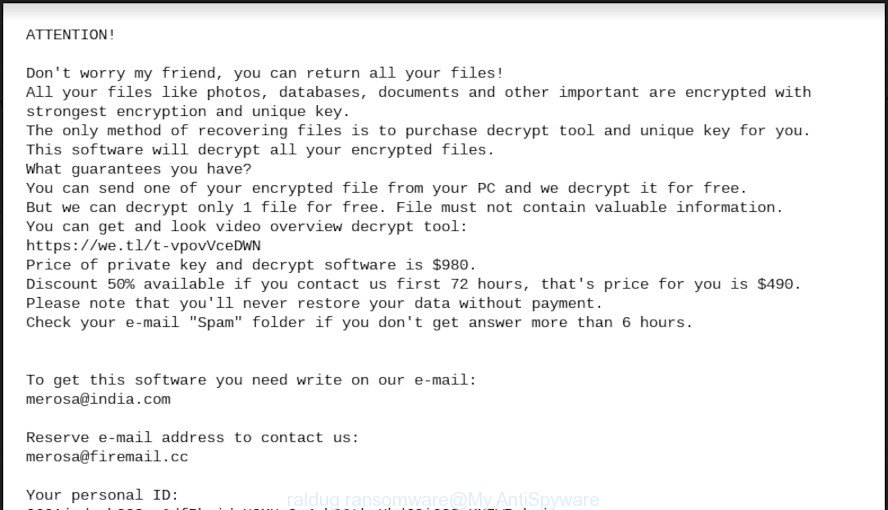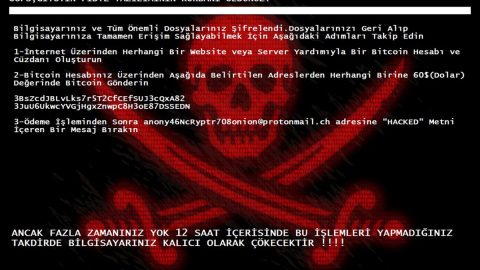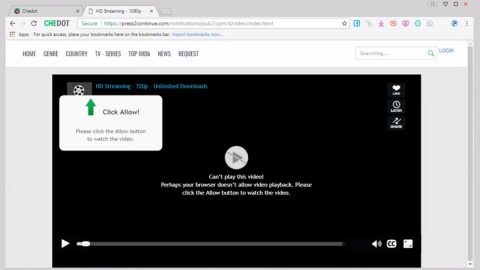What is Raldug ransomware? And how does it carry out its attack?
Raldug ransomware is a data-encrypting malware designed to lock important files in an infected computer. It is related to both Djvu ransomware and STOP ransomware. It uses a “.raldug” extension to mark the files it encrypts. This threat uses a sophisticated encryption algorithm but the good thing is that security experts were able to come up with a free decrypter which will be discussed in this post.

Once Raldug ransomware infiltrates a computer, it uses a built-in infection sequence which starts with a data-gathering process used to extract data classified into two namely, user personal data and attack optimization data. The acquired data is then used for another malicious process in order to bypass security programs installed in the computer. In this process, Raldug ransomware looks for signatures of antivirus programs, virtual machine hosts, and sandbox environments and once it finds programs with these signatures, their real-time engines are either shut down or removed. After that, it also alters the Windows Registry to allow it to run on every system boot. It then scans the computer for its targeted files and encrypts them with both the AES and RSA 1024 ciphers. Following data encryption, Raldug ransomware appends the .raldug extension to every affected file and releases its ransom note named “_open_.txt”, which states:
“ATTENTION!
Don’t worry my friend, you can return all your files!
All your files like photos, databases, documents, and other important are encrypted
with the strongest encryption and unique key.
The only method of recovering files is to purchase a decrypt tool and unique key for you.
This software will decrypt all your encrypted files.
What guarantees do you have?
You can send one of your encrypted files from your PC and we decrypt it for free.
But we can decrypt only 1 file for free. The file must not contain valuable information.
You can get and look video overview decrypt tool:
hxxps://we.tl/t-1LFQOfI0Se
The price of a private key and decrypt software is $980.
Discount 50% available if you contact us first 72 hours, that’s a price for you is $490.
Please note that you’ll never restore your data without payment.
Check your e-mail “Spam” folder if you don’t get an answer in more than 6 hours.
To get this software you need writes on our e-mail:
[email protected]
Reserve an e-mail address to contact us:
[email protected]
Your personal ID:”
How does Raldug ransomware spread online?
Raldug ransomware spreads with the help of a malicious spam email campaign that contains a harmful attachment. This malicious attachment may be a document with macro scripts that are used to launch Raldug ransomware into the system. Thus, you need to be extra careful in opening emails no matter who sent them and always do a double check before you open any attachment as it may contain the malicious payload of ransomware threats like Raldug ransomware.
Eliminate Raldug ransomware from your infected computer with the help of the following removal guide.
Step_1: First, tap the Ctrl + Shift + Esc keys on your keyboard to open the Task Manager.
Step_2: After opening the Task Manager, go to the Processes tab and look for any suspicious-looking process that takes up most of your CPU’s resources and is most likely related to Raldug ransomware.
Step_3: After that, close the Task Manager.
Step_4: Tap Win + R, type in appwiz.cpl and click OK or tap Enter to open Programs and Features under Control Panel.
Step_5: Under the list of installed programs, look for Raldug ransomware or anything similar and then uninstall it.
Step_6: Next, close the Control Panel and tap Win + E keys to launch File Explorer.
Step_7: Navigate to the following locations below and look for Raldug ransomware’s malicious components such as “_open_.txt” and [random].exe and other suspicious files, then delete all of them.
- %TEMP%
- %APPDATA%
- %WINDIR%\System32\Tasks
- %APPDATA%\Microsoft\Windows\Templates\
- %USERPROFILE%\Downloads
- %USERPROFILE%\Desktop
Step_8: Close the File Explorer.
Before you proceed to the next steps below, make sure that you are tech-savvy enough to the point where you know exactly how to use and navigate your computer’s Registry. Keep in mind that any changes you make will highly impact your computer. To save you trouble and time, you can just use Restoro, this system tool is proven to be safe and excellent enough that hackers won’t be able to hack into it. But if you can manage Windows Registry well, then by all means go on to the next steps.
Step_9: Tap Win + R to open Run and then type in Regedit in the field and tap enter to pull up Windows Registry.
Step_10: Navigate to the following path:
- HKEY_CURRENT_USER\Control Panel\Desktop\
- HKEY_USERS\.DEFAULT\Control Panel\Desktop\
- HKEY_LOCAL_MACHINE\Software\Microsoft\Windows\CurrentVersion\Run
- HKEY_CURRENT_USER\Software\Microsoft\Windows\CurrentVersion\Run
- HKEY_LOCAL_MACHINE\Software\Microsoft\Windows\CurrentVersion\RunOnce
- HKEY_CURRENT_USER\Software\Microsoft\Windows\CurrentVersion\RunOnce
Step_11: Delete the registry keys and sub-keys created by the Raldug ransomware.
Step_12: Close the Registry Editor and empty the Recycle Bin.
Congratulations, you have just removed Raldug Ransomware in Windows 10 all by yourself. If you would like to read more helpful articles and tips about various software and hardware visit fixmypcfree.com daily.
Now that’s how you remove Raldug Ransomware in Windows 10 on a computer. On the other hand, if your computer is going through some system-related issues that have to get fixed, there is a one-click solution known as Restoro you could check out to resolve them.
This program is a useful tool that could repair corrupted registries and optimize your PC’s overall performance. Aside from that, it also cleans out your computer for any junk or corrupted files that help you eliminate any unwanted files from your system. This is basically a solution that’s within your grasp with just a click. It’s easy to use as it is user-friendly. For a complete set of instructions in downloading and using it, refer to the steps below
Perform a full system scan using Restoro. To do so, follow the instructions below.












